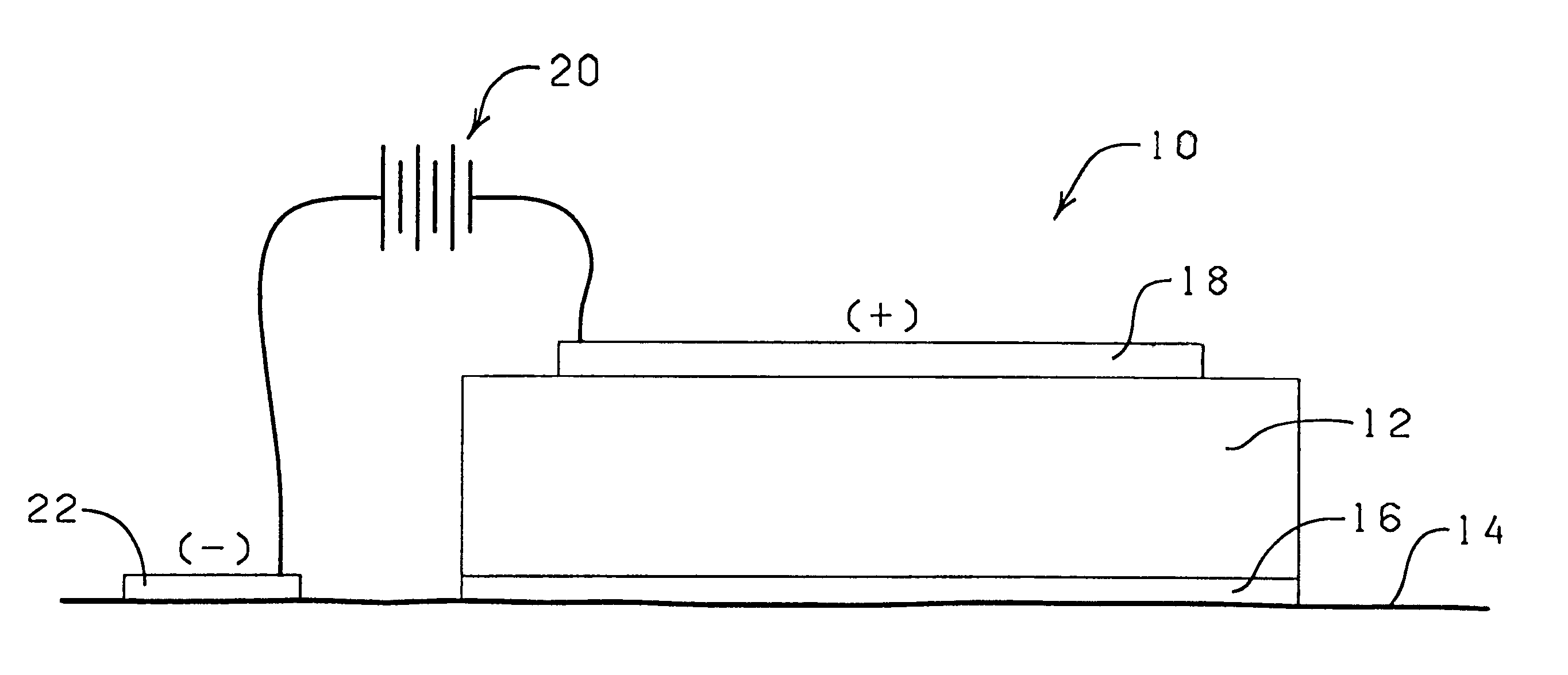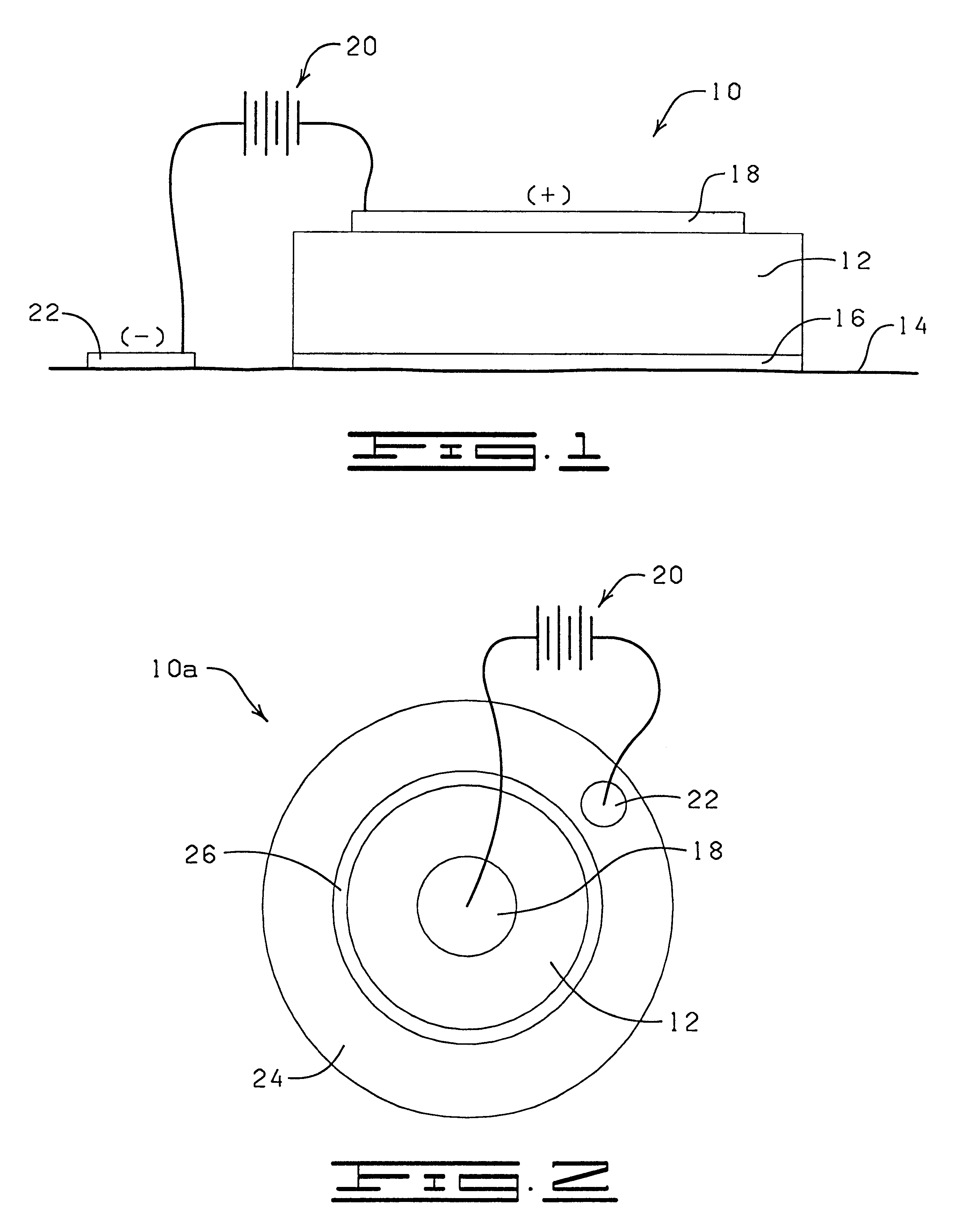Iontophoretic transdermal delivery device
a technology of ionized drugs and transdermal delivery, which is applied in the field of ionized drug transdermal delivery devices, can solve the problems of limiting the time the patch is usable, affecting the use of the patch, and affecting the effect of the patch,
- Summary
- Abstract
- Description
- Claims
- Application Information
AI Technical Summary
Problems solved by technology
Method used
Image
Examples
Embodiment Construction
The system described herein comprises a drug-reservoir that provides a ready-to-use, current-efficient, convenient and stable matrix for iontophoretic drug delivery using hydrophobic materials. This system will minimize EEO, enhance the stability of the drug and virtually eliminate the loss of water upon storage. Also, this patch matrix is capable of delivering the drug over a period of several days.
More particularly, the present invention comprises a conducting silicone matrix into which is incorporated a solution suspension of an active drug thereby forming an "aqueous suspension-in-silicone" emulsion. The drug is prepared as a concentrated suspension (which minimizes the degradation rate of the drug) in a water-cosolvent system and is incorporated in a silicone matrix using a silicone surfactant. An electrolyte may be incorporated into the silicone for increasing its conductivity.
When a current is applied to the emulsion matrix, the active drug in the individual aqueous "globules...
PUM
 Login to View More
Login to View More Abstract
Description
Claims
Application Information
 Login to View More
Login to View More - R&D
- Intellectual Property
- Life Sciences
- Materials
- Tech Scout
- Unparalleled Data Quality
- Higher Quality Content
- 60% Fewer Hallucinations
Browse by: Latest US Patents, China's latest patents, Technical Efficacy Thesaurus, Application Domain, Technology Topic, Popular Technical Reports.
© 2025 PatSnap. All rights reserved.Legal|Privacy policy|Modern Slavery Act Transparency Statement|Sitemap|About US| Contact US: help@patsnap.com


